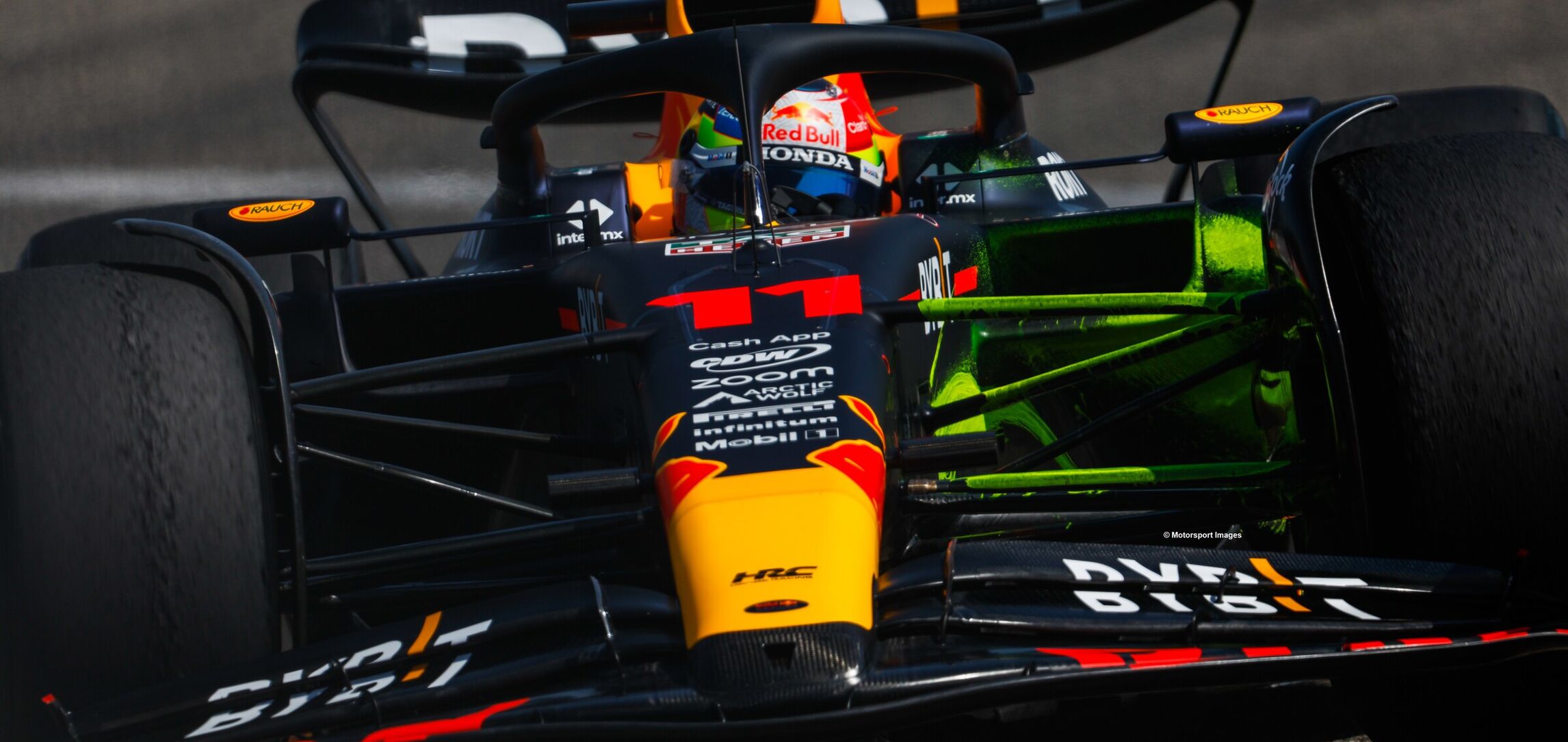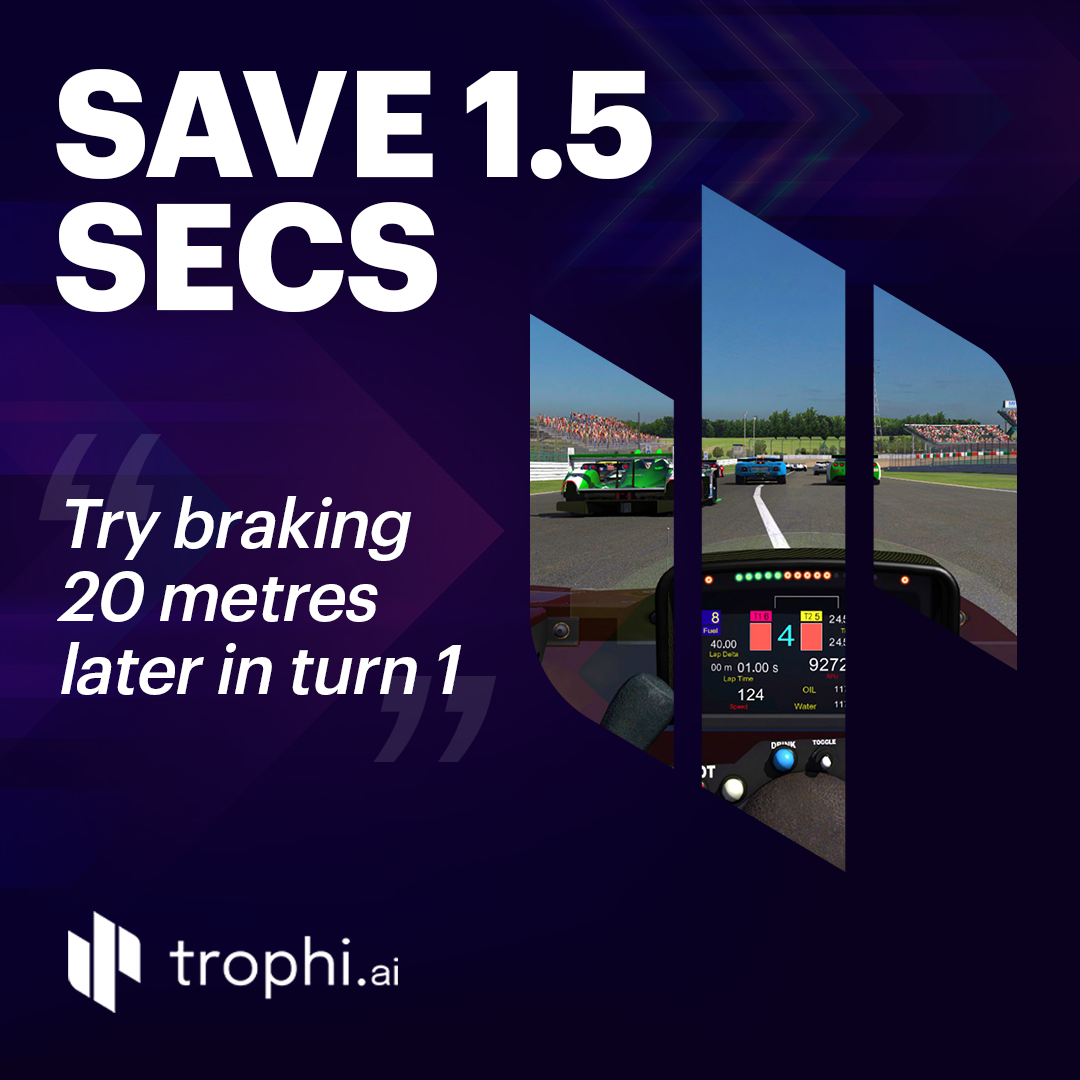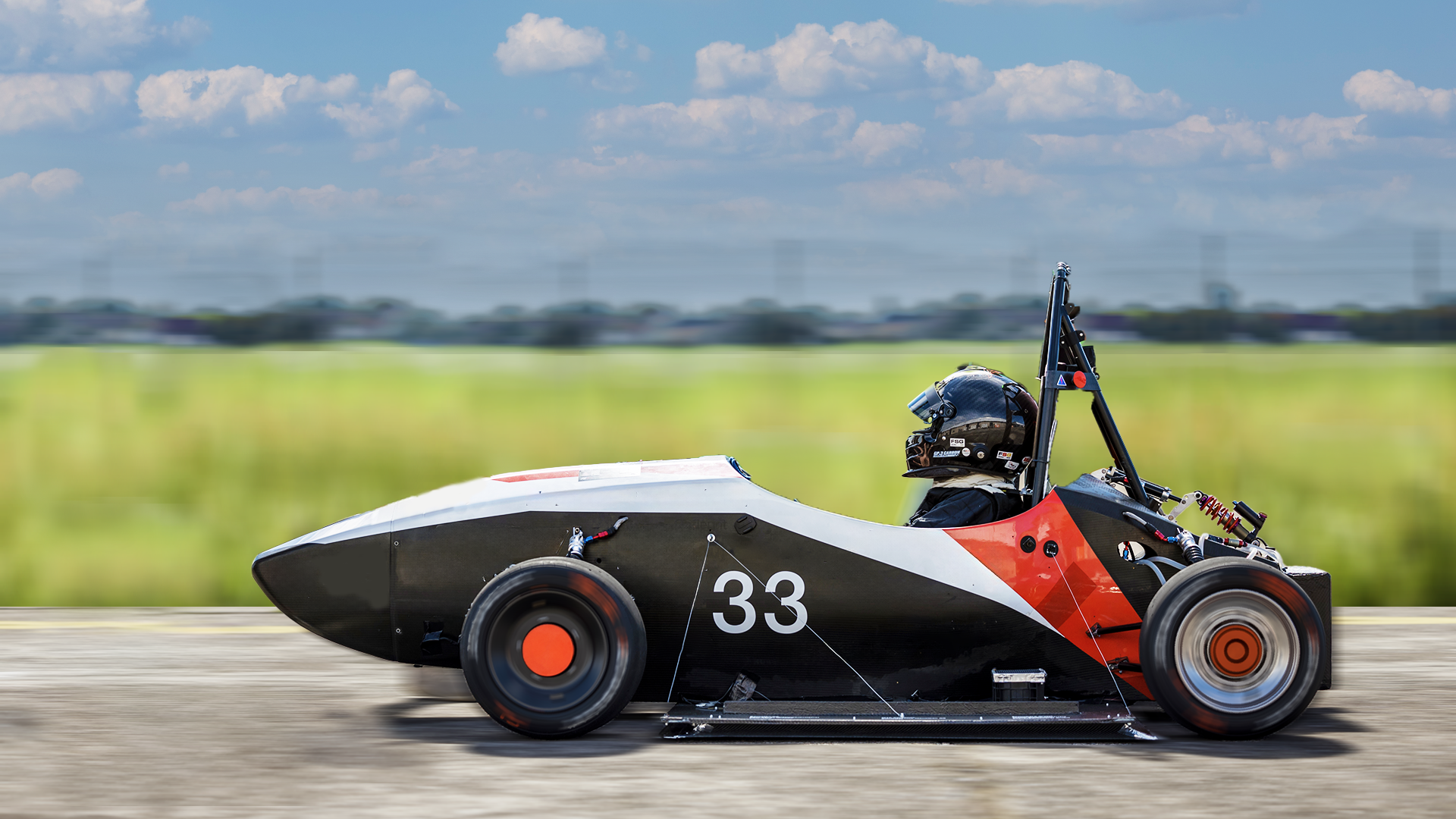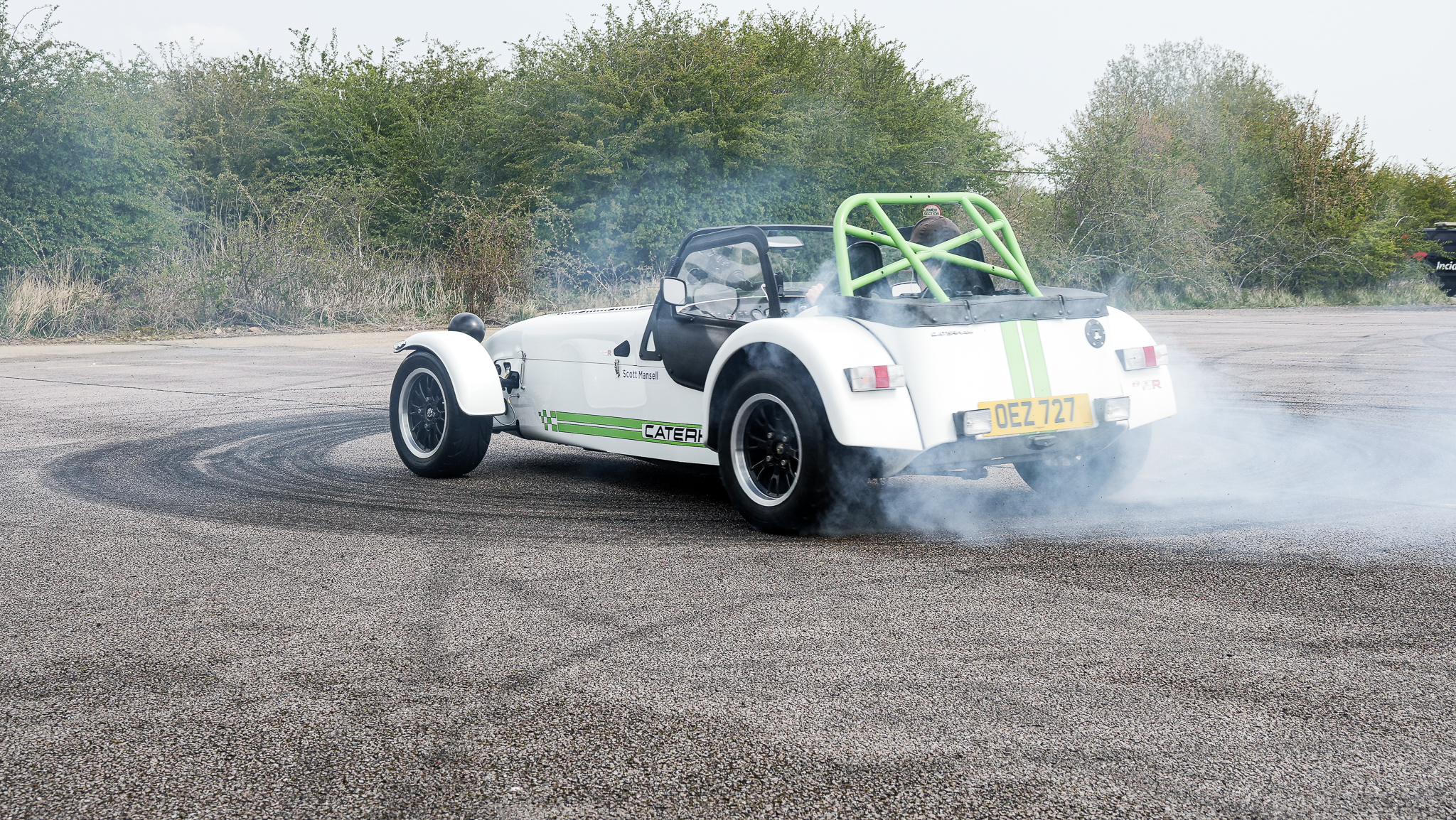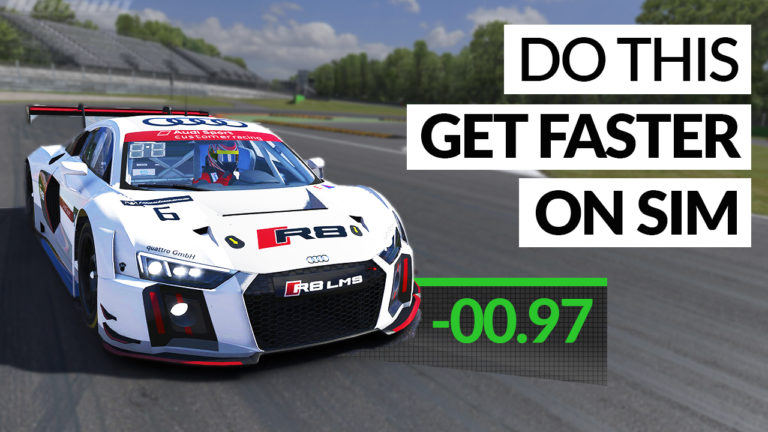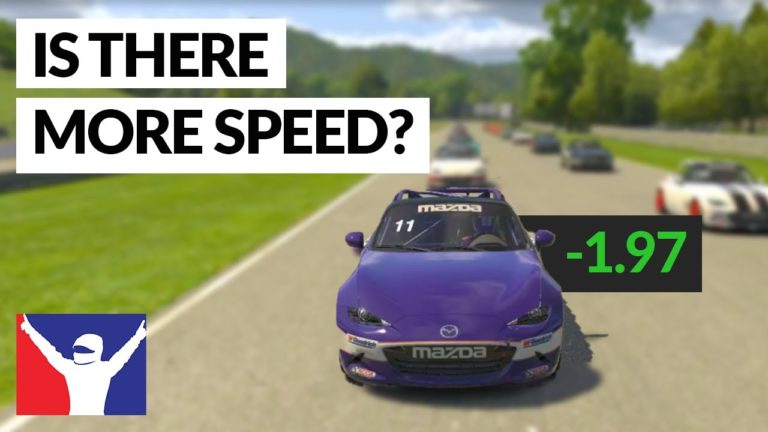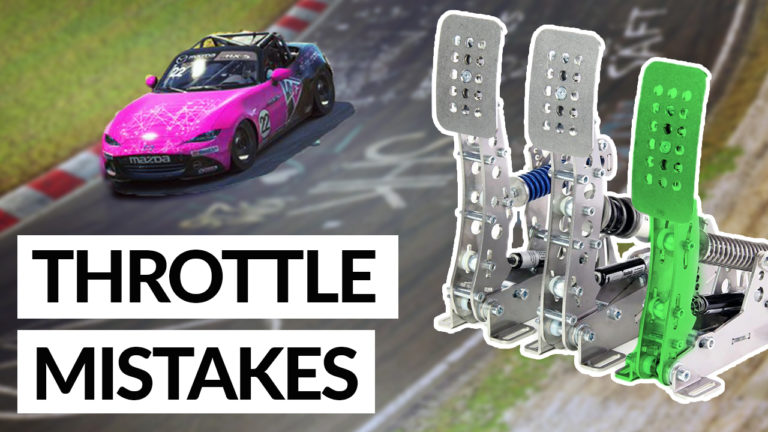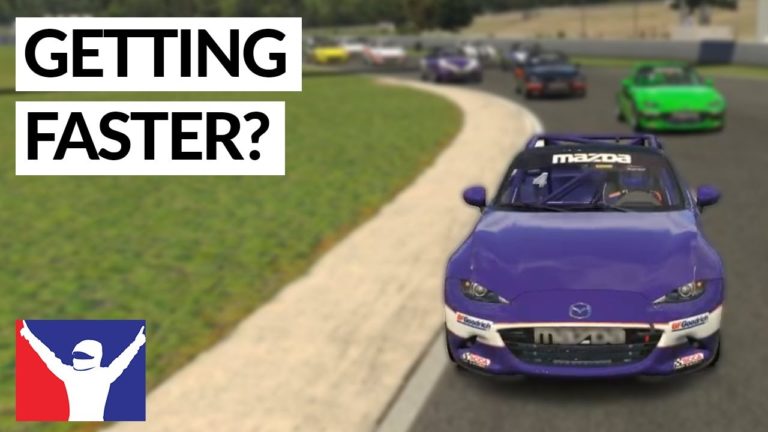The Biggest Sim Racing Mistakes
There are a few simple, yet big mistakes that sim racers make when driving on their simulator that costs them lots and lots of lap time.
In this video, I’m going to use our subscriber’s onboard footage to show you these three biggest mistakes and explain how you can quickly fix them and generate a lower uptime. Ultimately, you’ll have a car that is easy to drive, has more grip and will allow you to win those races.
Hi, I’m Scott Mansell, head coach from Driver 61 sim racing, where we teach you to improve your technique, win races and fulfil your potential as a sim driver.
Transcript
So, here we are in the footage. Now, this driver isn’t necessarily making these mistakes but I want to use the footage to explain how were how you can improve your technique to make your lap times quicker.
The first big mistake that I see is that sim racers just aren’t looking in the right area. Everything that you do in the car comes from vision. You need to be understanding how you’re progressing along the race track and what’s coming up to you so that you can visualize the racing line through the next corner, adjust speed appropriately and get on the throttle at the right point to maximize your exit.
In terms of vision, the biggest mistake is sim racers generally don’t look far enough ahead. The quicker that you’re going on track, the further ahead you need to look. But it’s natural instinct as humans to actually narrow down our vision. This happens in the real world as well. If your vision is too close to the car in this area, as you can see on the footage here, we’re not seeing the information or the corners coming at us early enough, which means that we’re having to react and we’d have to change steering angle.
The first thing that you need to do is to move your vision further up the road. So here, for example, we’re looking at the apex as soon as we possibly can, maybe a little bit on the outside, but then back to the inside of the corner.
We’re looking at the corner, then looking to the outside of the corner all the way down the road here. Scanning through this whole section, can help you in right situations, because if someone has gone off, you see it really early.
Looking around the corner into the braking zone here and you just pick out the apex on the inside, outside, inside. And now we’re looking for the exit as soon as you can.
The important thing here is that we’re looking a long way ahead. As long as we as far ahead as we possibly can. But then we also need to scan back and scan back and forth.
If you’re only looking a long way ahead, you lose the information of what’s just in front of you in the car. And that can be a problem because you lose some accuracy on the outside of the circuit as you’re turning the car in.
Now, as a rule of thumb, you want to always be looking a stage ahead of yourself. When you’re coming into a corner. So when you’re braking, you’re looking down at the apex, not the turning point.
We’re looking down at the inside of the corner just before we’re coming into the apex. Then we want to move our vision to the outside of the track and looking to the exit. So you’re always out one step ahead of yourself, maybe a second and a half or two seconds.
The next biggest mistake I see in sim racing is that there’s too much of a change in speed. And by that, I mean that that over slowing the car into the apex of a corner.
Now, this is a tricky one, because sometimes when we’re driving, we can get a bit of a negative feedback from the car. If we brake harder into a corner, the rear of the car will end up sliding and breaking traction, which makes you think that the car’s at the limit.
However, it’s only breaking traction at the rear because the weight is in the nose of the car because you’re so heavily decelerating. When you turn the car in the rear is up in the air and doesn’t have much weight over it. You then think that while you’re at the limit and there’s no way that you can get faster into the corner.
However, if you braked and then eased up as you’re turning into the corner, you allow the front to rise up. You allow more grip to go to the rear of the car and the car will be better balanced and therefore have more grip, which means you can enter the corner quicker.
Now, this is counterintuitive because the brake means safety, right? You want to slow the car down, you want to be safe, you get on the brakes. However, in this instance, when you’re coming into the corner, a lot of the time, it’s much better to give up the brakes to a light pressure, not completely off, but to a light pressure. And that controls the front much better on the way into the corner.
So let’s put this into perspective here with the footage that we have. We’re coming into the hairpin and let’s watch the braking pressure. You can see that we’re full on the brakes at this point. And as we’re in a straight line, we can use the brakes as hard as we possibly can because the tyres grip doesn’t need to be used for turning.
It’s only being used for slowing the car down. So the car’s slowing then and now this is where we should be actually easing up off the brake pressure because we’re adding an extra load into the car. We’re asking it to turn as well as slow down. And if we’re slowing down at the maximum force, then it isn’t possible to turn as well because we’re using all the grip to decelerate. So we have to get on the brakes in a straight line, ease up, and then begin to turn the car into the corner, which if you look at the brake trace here, this driver is doing easing up.
We should be braking, braking in a straight line. And then as we’re coming into this section, easing up. But keeping the brakes on just a fraction, just a fraction, getting the car to just rotate. Just oversteered a little bit and then patiently pick up the accelerator, as this driver does on the kind of second attempt.
But he’s already gone gone on the throttle once already, which means that he’s actually gone into the corner a little bit too slowly. Now, this technique is called trail braking. And we’ve got some other videos on the Driver61 sim racing channel.
The third biggest mistake that I see sim drivers make is getting on the throttle too hard initially when they’re in the mid, middle part of the corner. And that goes back to what I was saying in the previous point, that some sim racers stop the car too much and then to kind of try and make up for the speed, they get back on the throttle too hard and they’re impatient to get on it.
If you’re able to get on the throttle pretty hard at the apex, or well before the apex, it means that you’re not going into the corn fast enough. So as a rule of thumb, if you can smash that throttle pedal before the apex, you’re not going in fast enough.
Go back to the previous point and have a think about how quickly you’re entering the corner. But if you smash the throttle pedal, all we’re doing is dropping the grip out of the car.
The limit when we’re driving the car on the limit is not a static point. The limit can be lower for some drivers than that and higher for others. And it all depends on the technique. Especially in the mid-corner, if you get to the mid point and stomp on the throttle, one of two things will happen. Either it will spin up the driven wheels with will spin, for example, which causes if its rear-wheel drive car causes a rear to slide and very aggressively and very quickly. Or if it is not a very powerful car, it will just squat the rear of the car down very quickly and cause the car to understeer a lot.
In both of those circumstances, the technique is bringing down the amount of grip that the drivers got and making the car unbalanced. What we should be doing is, is trail braking into the corner. As I’ve just explained in the videos here and then before the apex or just on the apex, we’re getting back on the accelerator in a really smooth way.
It’s just a fraction of throttle position, percentage waiting, waiting, waiting and then accelerating out the corner once we can see the exit. And the reason that we do this is because we don’t want the platform of the car to change too quickly.
If you stamp on the accelerator we could get the wheel spin or it just scores the way down so quickly. Whereas if you get on it smoothly, we bring the platform in smoothly and then we can accelerate through the corner. So we’re keeping that limit as high as possible.
It makes the car and easier to drive because the platform isn’t moving around quite as much. So let’s check out the throttle application here. You can see that is on the throttle already, way before we can even see the exit of the corner and then gets out again.
And finally, on and off and now he smashes it back on so you can see that this drive is having two almost three attempts at the throttle pedal and all of this extra work on the accelerator is making the car pitch like this, moving the balance around, moving the weight from the front to the front to the rear and lowering the amount of grip.
Take a look back at the video like this and make sure that the throttle trace is a little bit for quite a period like 10 or 20%. Then you’re ramping it up as you come out of the corner, as you open the steering angle.
Now that you’ve seen the three biggest mistakes that you can make in sim racing. Check out this short playlist I put together that would teach you about other techniques such as trail braking and how to take the perfect racing line. They’ll help you be as fast as possible in your sim racing. Just click the video up here. I’ll catch you in the next one.


